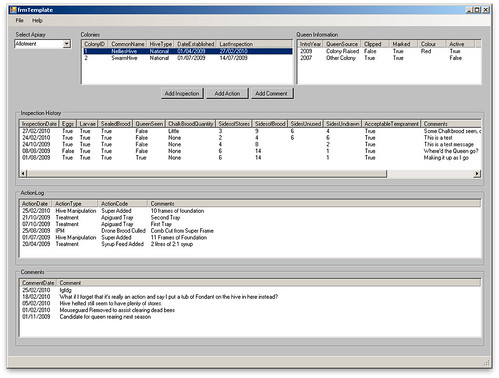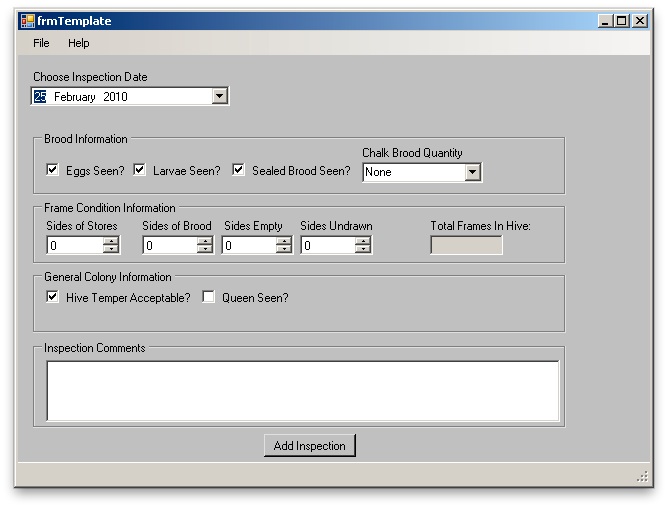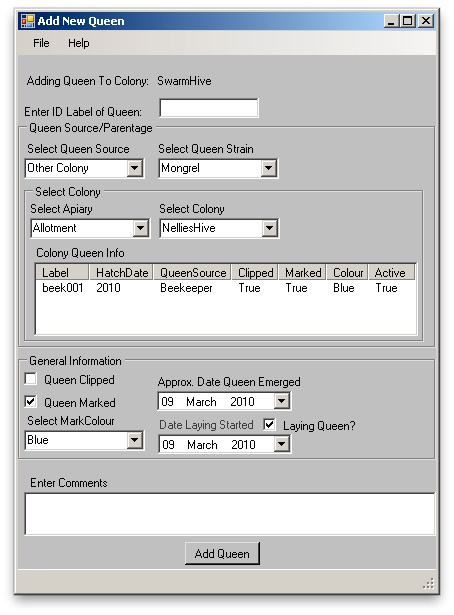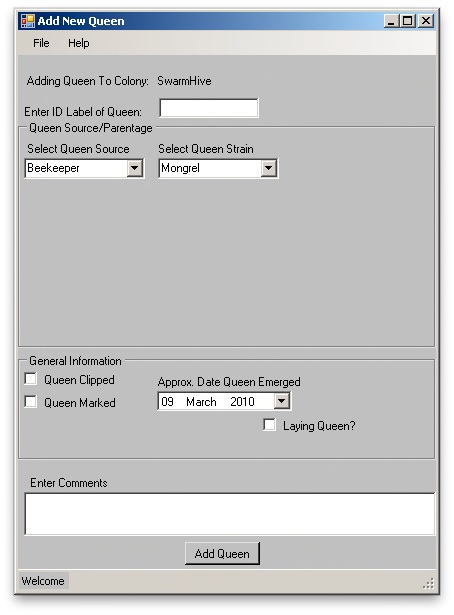Put it in here as the topic inevtiably winds its way into why did I choose this method over that one and so on ;D
The Beekeeping what now?
As a sometime Database Developer and stuff I wasn't happy with bits of paper stuck under hive roofs and all that jazz so I've been putting together a Beekeeping Inspection database that I can use to track all the inspections, actions and general observations against my colonies, Trace the lineage of my queens and do other stuff related to my bees. There's a lot more stuff in it, but I'm currently concentrating on the core Colony inspection information as I'm concious that time is ticking on and I'd like to get at least the core inspection information ready for this year's inspections if I can.
What stage is it at now?
Right now I term the current version a "Proof of concept". You can add information to it, but not amend or remove information. The front end is very rough and I'm sure there is stuff in there that could work better and stuff that isn't in there that should be.
Can I have a look at it and tell you what's rubbish about it?
Please do. I'm really keen now for people to start playing with it and telling me what they like about it, what they don't. What information they want to record in it but can't and what they're being asked to record at the moment that they don't want to. I'd like to think it's a great opportunity to help shape a tool I really hope will be useful to beekeepers of all levels whether they've got 1 hive or 100.
What do I need to run the software?
A copy of Windows 2000,XP, Vista or 7 that is fully patched and up to date.
Yeah Yeah, enough text, what does it look like?
click for a full sized image. This shows the summary information of colonies for a given apiary and Queen information, Inspection history, action log and Comment history for the selected Colony.
This is the sample Inspection form used to input an inspection against a colony.
Ok, I'm interested, how do I get to play with it?
Send me a PM with your email address and I'll send you a copy and updates as and when I include new bits to play with. I will say that it is NOT ready for you to start recording your own inspection information as the database is still being tweaked regularly. What I'm interested in is feedback about the information being recorded. What you like, what you don't, what you want to record that isn't included and so on. Currently updates include a new copy of the DB so any information you record now will be overwritten or at best not work correctly with the new application.
Happy to answer any other questions or take on board suggestions if people have any.








 Reply With Quote
Reply With Quote



Bookmarks